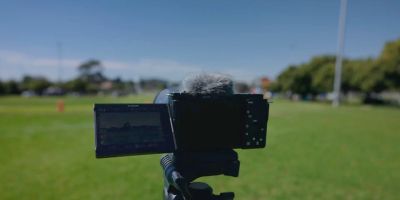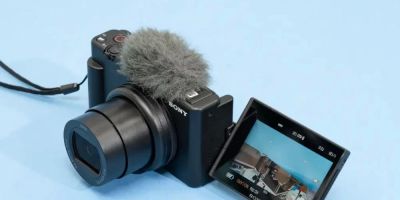Best Photography Gear for Shooting Nature Photography
As a nature photographer, I’ve learned that having the right gear can make all the difference between capturing a stunning image and missing a fleeting moment. Whether you’re photographing sweeping landscapes, wildlife in motion, or the minute details of plants, the equipment you use can either enhance or hinder your ability to create compelling images. I’ve spent years experimenting with different cameras, lenses, and accessories to find the best photography gear for shooting nature photography. In this article, I’ll share my personal recommendations and insights into the gear that will help you take your nature photography to the next level.
1. The Importance of a Good Camera Body
The camera body is the heart of your setup. When I first started out, I used a mid-range camera, but as my skills improved, I quickly realized that investing in a higher-end camera body was crucial for achieving the level of quality I wanted in my nature shots. The key factors that determine the best camera for nature photography are resolution, durability, and low-light performance.
1.1 Resolution
When shooting nature photography, especially landscapes or detailed close-ups, high resolution is important. I’ve found that a camera with at least 24 megapixels is ideal for large prints and capturing fine details. Higher resolution cameras give you the flexibility to crop your images without losing image quality. A great example of this is the Canon EOS R5, which I personally use. Its 45 megapixels allow me to capture breathtaking details in both wildlife and scenic shots.
1.2 Durability and Weather Sealing
Nature photographers often find themselves shooting in harsh conditions. Whether it’s rain, snow, or extreme temperatures, you need a camera that can withstand the elements. The weather-sealed body of the Nikon D850 has served me well during my outdoor shoots, keeping the camera protected from dust and moisture. I always recommend looking for a camera body with weather sealing when shooting outdoors, especially in unpredictable environments.
1.3 Low-Light Performance
Nature doesn’t wait for perfect lighting conditions, so having a camera with good low-light performance is essential. When photographing wildlife at dawn or dusk, the last thing you want is noisy or grainy images. I’ve used the Sony Alpha 7R IV for its incredible low-light capabilities. Its high ISO range allows me to shoot in darker conditions without compromising image quality.
2. Essential Lenses for Nature Photography
Choosing the right lens for your specific needs is just as important as selecting the right camera. Over the years, I’ve built a collection of lenses to handle different aspects of nature photography. Whether you’re shooting sweeping landscapes or getting close to a wild animal, the lens you choose can drastically affect your results.
2.1 Wide-Angle Lenses for Landscapes
For landscape photography, wide-angle lenses are a must. These lenses allow you to capture vast scenery, whether it’s a mountain range, a sprawling forest, or a dramatic sky. I’ve had great results with the Canon EF 16-35mm f/2.8L III USM lens. Its wide focal length range and fast aperture make it perfect for low-light conditions and capturing the grandeur of nature. The sharpness and clarity of this lens are exceptional, and it has become a staple in my gear bag.
2.2 Telephoto Lenses for Wildlife Photography
When photographing wildlife, having a good telephoto lens is crucial. A long focal length allows you to capture animals from a distance without disturbing them. The Nikon AF-S Nikkor 200-500mm f/5.6E ED VR lens is one of my go-to choices for wildlife photography. It allows me to photograph animals from a safe distance, while still achieving sharp, detailed images. The vibration reduction (VR) feature is also a lifesaver when shooting handheld at longer focal lengths.
2.3 Macro Lenses for Close-Up Photography
Nature photography often involves getting up close to small subjects like insects, flowers, or textures. Macro lenses allow you to capture incredible details that are often missed by the naked eye. I’ve had great success with the Canon EF 100mm f/2.8L Macro IS USM lens. The image stabilization (IS) feature helps reduce camera shake when shooting at very close distances, ensuring sharp and crisp images even when hand-holding the camera.
3. Tripods: Stability for Perfect Shots
One of the best investments I made for my photography setup was a sturdy tripod. When you’re shooting in low light or with a telephoto lens, any small movement can cause blur in your photos. I learned this the hard way during a sunset shoot when I didn’t use a tripod and ended up with blurry shots. Since then, a good tripod has become a permanent part of my gear. I recommend a tripod with a solid build and adjustable height, like the Manfrotto 055XPRO3. It offers excellent stability and flexibility for any shooting situation.
4. Filters to Enhance Your Photos
Using filters can enhance your nature photos in ways that post-processing can’t always replicate. For instance, polarizing filters help reduce glare and enhance colors, making them especially useful when shooting landscapes or water scenes. I always carry a circular polarizer filter with me. It not only helps saturate colors and reduce reflections on water but also adds contrast to the sky. A neutral density (ND) filter is also a great tool when shooting waterfalls or long-exposure shots, allowing me to achieve beautiful motion blur.
5. Camera Bags for Safe Transport
When you're out in the field, having a reliable camera bag is crucial to protect your gear and keep it organized. I personally prefer a backpack-style bag, like the Lowepro Flipside 500 AW II, which holds my camera, lenses, tripod, and accessories securely while keeping everything easily accessible. It’s comfortable to wear on long hikes and offers padded compartments to ensure my gear stays safe while I explore nature.
6. Additional Accessories for Convenience
In addition to the main gear, there are several smaller accessories that can make a big difference in your nature photography experience. Here are a few items I always have with me:
6.1 Spare Batteries and Memory Cards
When you’re out in nature, especially in remote locations, it’s important to be prepared. I always bring several spare batteries and memory cards because there’s nothing worse than running out of power or storage when you’re in the middle of a photo op.
6.2 Lens Cleaning Kit
Nature shoots often mean exposure to dirt, rain, and dust. I never leave home without a lens cleaning kit to ensure my lens remains spotless. I use a microfiber cloth, lens brush, and lens wipes to keep my gear clean and ready for the next shot.
6.3 Remote Shutter Release
When photographing wildlife or landscapes, a remote shutter release helps avoid camera shake, which can blur your photos. I use a wireless shutter release, which allows me to trigger the camera without touching it, making it perfect for long exposure shots or when using a tripod.
SEO Title: Best Photography Gear for Shooting Nature Photography
SEO Keywords: best photography gear, nature photography, best camera for nature, photography lenses, nature photography tips, photography equipment
SEO Description: Discover the best photography gear for shooting nature, from camera bodies to lenses and accessories. Learn how to choose the right equipment for stunning nature shots and wildlife photography.





